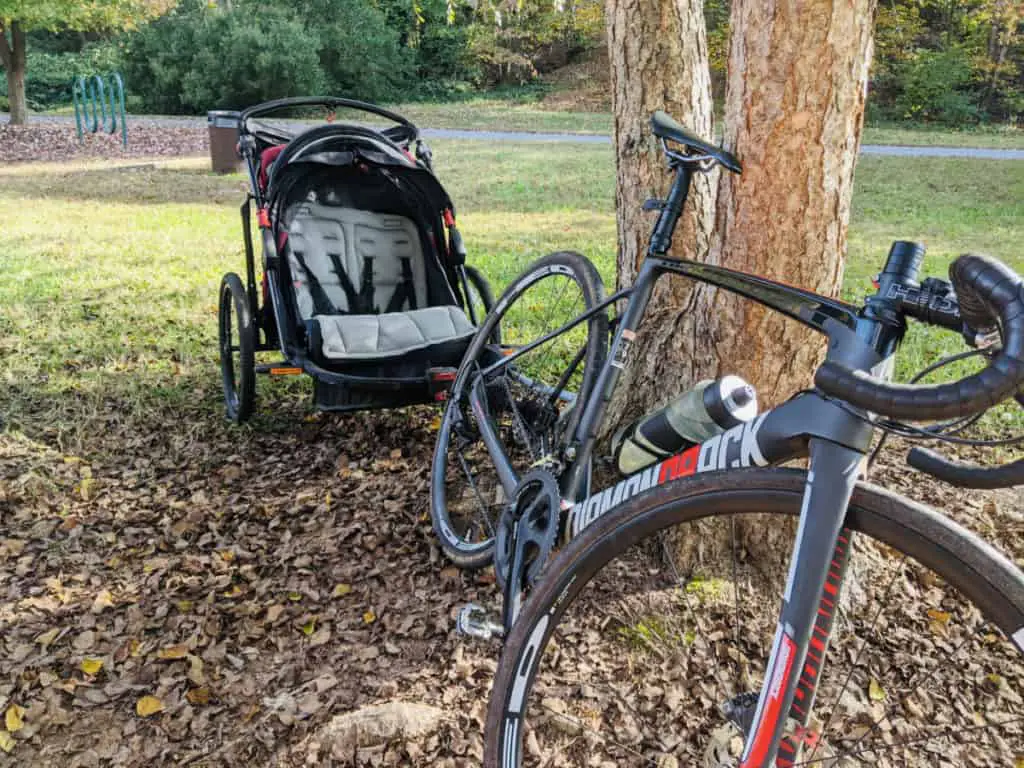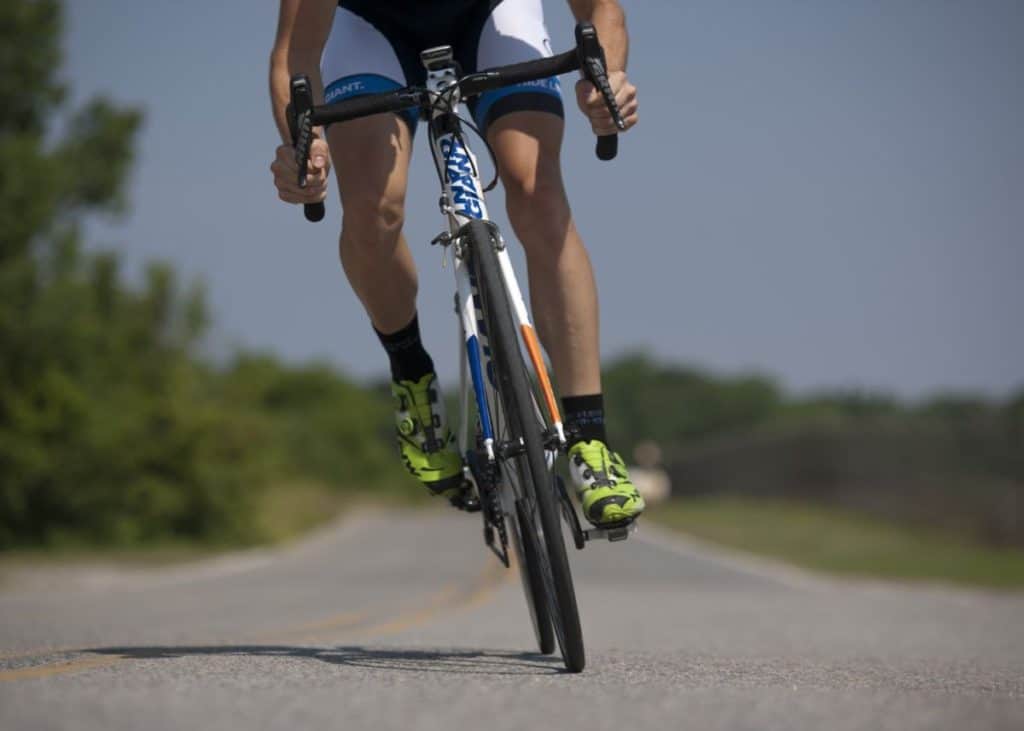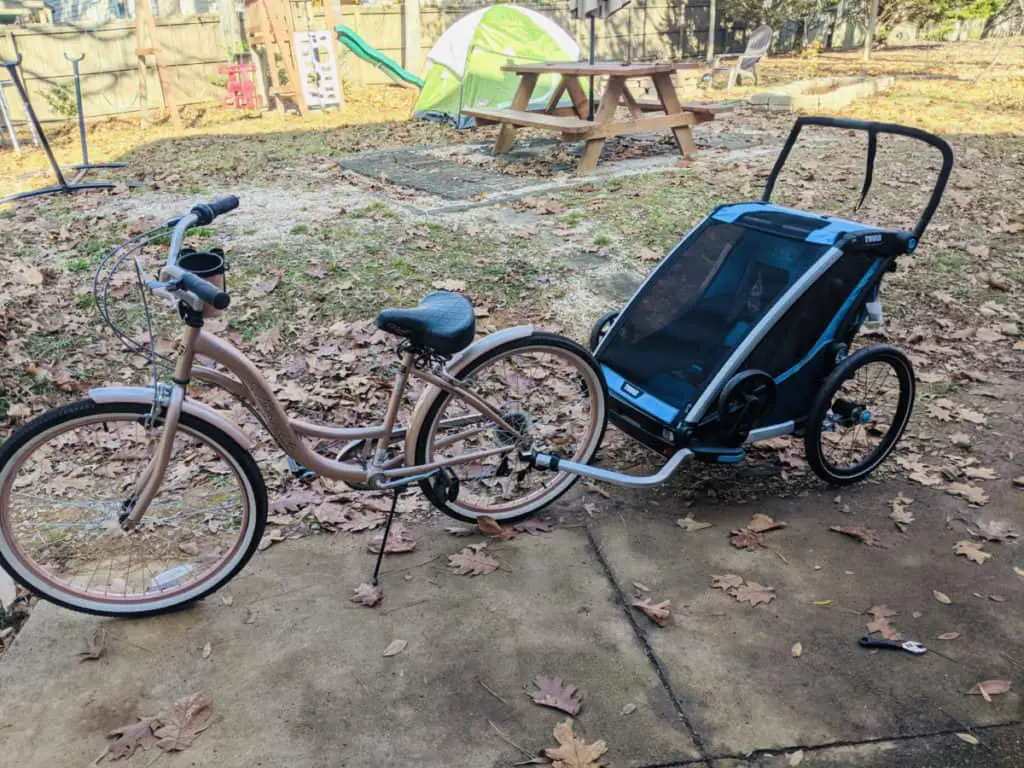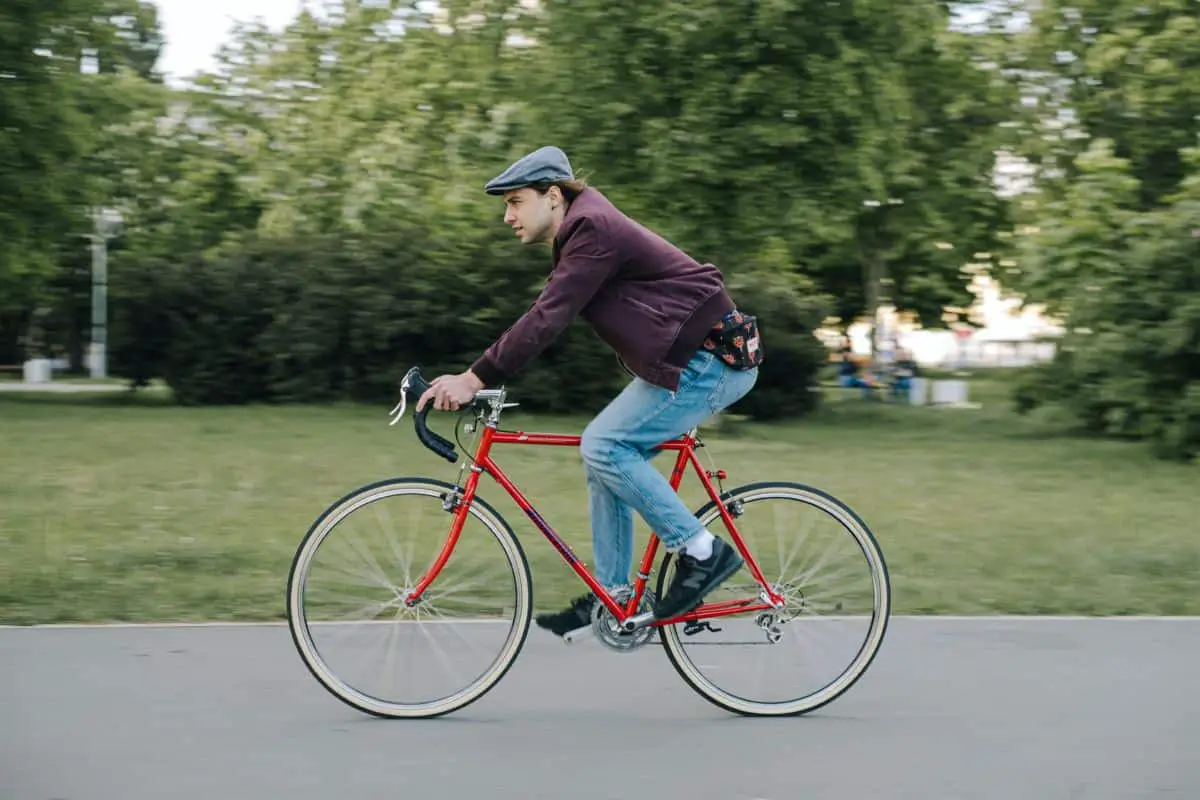It seems that everyone these days is using a road bike for commuting to work and getting around town. Road bikes seem like a good option, but road bikes can be intimidating for people who are new to them.
So are road bikes the best option for bike commuting?
Road bikes are up to 30% faster than other bikes, such as mountain or cruiser bikes, which makes them preferable for bike commuting. The riding position on a road bike allows for better aerodynamics and more power to the legs. In addition, road bikes are generally more lightweight than alternative options.
I’ve been biking to work daily for the last 6+ years and have experimented with several different types of bikes, including a mountain bike, a beach cruiser, a gravel bike, a hybrid bike, and a road bike. By far, the fastest and lightest bike I’ve used so far is my road bike.
Four reasons road bikes are best for commuting
To come to the conclusion that road bikes are the best bike for commuting, let’s first take a look at what features would comprise the ideal bike for riding daily to work and around town.
Considering that the amount of time that biking can add to your daily commute, it’s important to consider the qualities of a bike that would make the riding faster and easier.
The ideal bike for commuting would have these qualities:
- Lightweight frame
- Aerodynamic riding position and frame
- Transfers the most amount of power to the legs
- Quick and easy gear shifting
Road bikes check all the boxes for the ideal bike for fast and efficient riding.
Let’s dive into each of these qualities one at a time.
Here’s a helpful table with pros and cons for different types of bikes.
| BIKE TYPE | LIGHTWEIGHT | AERO | POWER TRANSFER |
| Road bike | ✅ (19 lbs) | ✅ | ✅ |
| Mountain bike | ❌ (29 lbs) | ❌ | ✅ |
| Cruiser | ❌ (40 lbs) | ❌ | ❌ |
| E-bike | ❌ (45-50 lbs) | ❌ | ✅ |
| Hybrid bike | ✅ (24–28 lbs) | ✅ | ✅ |
I wrote an article on exactly how fast you can expect to ride while commuting, which you can check out here.
1. Road bikes are lightweight
Road bikes are the most lightweight bike available. The average road bike weighs around 18 lbs (8.1 kg), which is significantly lighter than other bikes. For instance, mountain bikes weigh 29 lbs (13.5 kg) on average and cruisers weigh 40 lbs (18.1 kg).
When it comes to everyday riding, the lighter the better. Having a lightweight bike that is easy to handle adds to the 10–30% savings in time over other alternatives.

You might think that the difference in weight doesn’t matter so much, which is a valid point. In the end, the difficulty of biking to work will decrease over time as you become stronger and follow a few riding tips to make it easier.
But if you have the option to choose which type of bike to use, a lightweight road bike is definitely preferred and recommended.
2. Road bikes offer better aerodynamics
Wind resistance is one of the greatest factors that adds difficulty to riding a bike. Road bikes offer the optimal riding position for being aerodynamic because the frame brings the rider’s body to a lower and flatter position. Additionally, the road bike frame itself is commonly designed to add more aerodynamics.
Other bikes, such as mountain bikes, cruisers, and hybrids, are designed to have the rider seated upright, which invites more air resistance while riding.
3. Road bikes transfer the most power to the legs
Road bikes position the rider’s legs in a way that transfers the most amount of strength to the legs. This is the most significant advantage of using a road bike.
Have you ever seen someone riding with their seat too low and their knees coming up high to their chest while they pedal? The reason that riding position is so inefficient is that it does not allow the rider’s legs to fully press down on each pedal stroke. It’s like running on sand! It’s like trying to throw a ball with just your wrist, without using your entire arm.

The only way to get the full strength from your legs is to be leaned forward slightly and have your seat high enough to allow your legs to almost extend fully on every pedal stroke. That’s exactly what a road bike offers. It’s free power!
Here’s a helpful video on getting your seat height perfect.
4. Road bikes offer quick and easy gear shifting
The last thing that the ideal bike would need is easy shifting. When riding daily to work, you’ll find that it’s essential to be able to switch between gears with ease. It’s especially important to have instant access to shifting gears right before climbing a hill, when accelerating after stopping, and when going on long rides.
In terms of which bike has the most gears available, mountain bikes obviously have a wider choice of gears. However, mountain bikes are much heavier than road bikes (about 11 lbs heavier) and they also don’t offer the same aerodynamic benefits that road bikes have.
Concerns with using a road bike
Many riders have concerns when riding on road bikes in general, such as the more aggressive riding position and the strange-looking shifters. I had the same concerns when I bought my first road bike. In fact, I had no idea how the shifters even worked!
But after just a few rides on a road bike, you will quickly get used to it and immediately notice how much faster and harder you can ride with minimal effort compared to other types of bikes.
Another concern that people have is that road bikes are expensive. Road bikes can be expensive if you buy the top-of-the-line model. But the same can be said for mountain bikes. You don’t need to get one of those high-end road bikes that you see in the Tour de France. All it takes is a used road bike from Craigslist, Facebook Marketplace, or a local garage sale. You’d be surprised how many used bikes are being passed around.
Read the tips below on how to ride safely with a road bike.
Pros and cons of bike commuting with other bikes
To get a definitive answer as to why road bikes are the preferred option for bike commuting, let’s take a hard look at the main pros and cons of using the other types of bikes available.

Here’s an overview of the pros and cons, with detailed explanations below the table.
| BIKE TYPE | PROS | CONS |
| Road bike | – Lightweight – Aerodynamic – Power transfer | – Takes getting used to |
| Mountain bike | – Ideal for rough terrains | – Heavy |
| Cruiser bike | – Comfortable | – Limited gears – Heavy – Low seat |
| E-bike | – Pedal assistance | – Heavy – Danger from high speed – Illegal in some cities |
| Hybrid bike | – Comfortable – Lightweight | – Not as optimal as road bike |
Mountain bike pros and cons
A mountain bike may seem like a good companion for bike commuting, but unless you’re riding on rough terrain, it’ll just make it more difficult.
Pros
- Ideal for rough terrains, such as mountain riding or gravel
- Comfortable upright riding position
Cons
- Heavy frame makes it slower
Cruiser pros and cons
Many people like beach cruisers because of their convenience and comfort, but there are some disadvantages to cruisers.
Pros
- Comfortable upright riding position
Cons
- No gears (or limited gear options)
- Seat is low and does not offer optimal power to legs
- Heavy frame makes it slower
E-bike pros and cons
E-bikes seem like the ideal bike for riding to work. They’re powerful, sturdy, and fun. But there are a few reasons not to use an e-bike.
Pros
- Pedal assistance while riding
Cons
- Danger of high speeds and losing control
- Reduced exercise and over-reliance on pedal assistance
- Illegal in some areas
Hybrid bike pros and cons
Hybrid bikes try to offer the best of all the different types of bikes, with an emphasis on casual riding. A hybrid bike is my second choice after the road bike when biking to work.
However, generally speaking, hybrid bikes are not as optimized for commuting as road bikes are. Hybrids have a more upright riding position, which does not allow for as much power transfer as a road bike. In addition, hybrid bikes are generally heavier than road bikes.
Pros
- Comfortable flat handlebar
- Lightweight frame (lighter than mountain bikes)
- Upright riding position
Cons
- Not as light as road bikes, generally
- Riding position not as optimal as road bikes
Three tips to effectively ride a road bike
If you’re an avid road cyclist (roadie) or somewhat comfortable with riding a road bike, then you will love bike commuting on a road bike.
Road bikes are my first choice when biking around town, primarily because of the added power that the riding position transfers to your legs. With all the hills and long-distance riding I’m doing, any extra power to the legs is welcome!
Some people are afraid to ride a road bike because of unfamiliarity and the fear of falling off. If that’s you, then keep reading!
1. Optimize your seat height to give your legs more power
Power is king when riding a bike. Unfortunately, so many people are missing out on some serious power from their legs simply because their bike seat is too low.
The reason their seat is so low is usually out of fear of being high off the ground and falling off the bike. But when riding a bike regularly, it is absolutely worth it to properly set up your bike seat for maximum power!
Riding with a low bike seat is like jogging in sand.
Here’s a helpful video on how to get a perfect bike fit!
2. Optimize your riding position for speed
The best way to optimize the riding position on a bike for speed is to keep the back flat and low. This can be achieved by placing your hands on the handlebar drops and keeping your elbows bent and tucked in.
Wind resistance is one of the biggest factors that slow you down. With a road bike, you can make a few small tweaks to your riding position to maximize your speed.
Keeping your back flat reduces the amount of frontal wind exposure. The more upright you are seated on the bike, the more your body is catching wind like a parachute. Be sure to utilize the handlebar drops to get down low. It might take a few weeks to get used to riding on the drops for extended periods, but you will get more comfortable over time.
Riding low becomes increasingly more important when riding against a headwind!
3. Avoid falling over on your road bike
Because the riding position on a road bike puts the rider higher off the ground, one of the fears some people have about road bikes is the potential of falling over.
With that said, if you’re not yet comfortable with riding a road bike, then spend a few days riding on your own to get used to the feel before you start commuting.
Road bikes are best for bike commuting
We covered many reasons why a road bike is the best option for biking to work. In a nutshell, road bikes take a bit of getting used to for some people, but the benefits of faster riding and more efficiency often outweigh the learning curve.
I’ve written an in-depth article on how to ride faster on your bike, which you can find here.
My Recommended Gear for Year-Round Cycling on a Budget
It took me years of trial and error to figure out the best and most affordable setup for my daily bike commuting. I would only recommend the gear that is good quality for a good price. Here’s my full year-round gear recommendation guide.
Want to know how much your cycling gear should cost? Check out my guide with different budget options here.
Ride on!
Also read:

